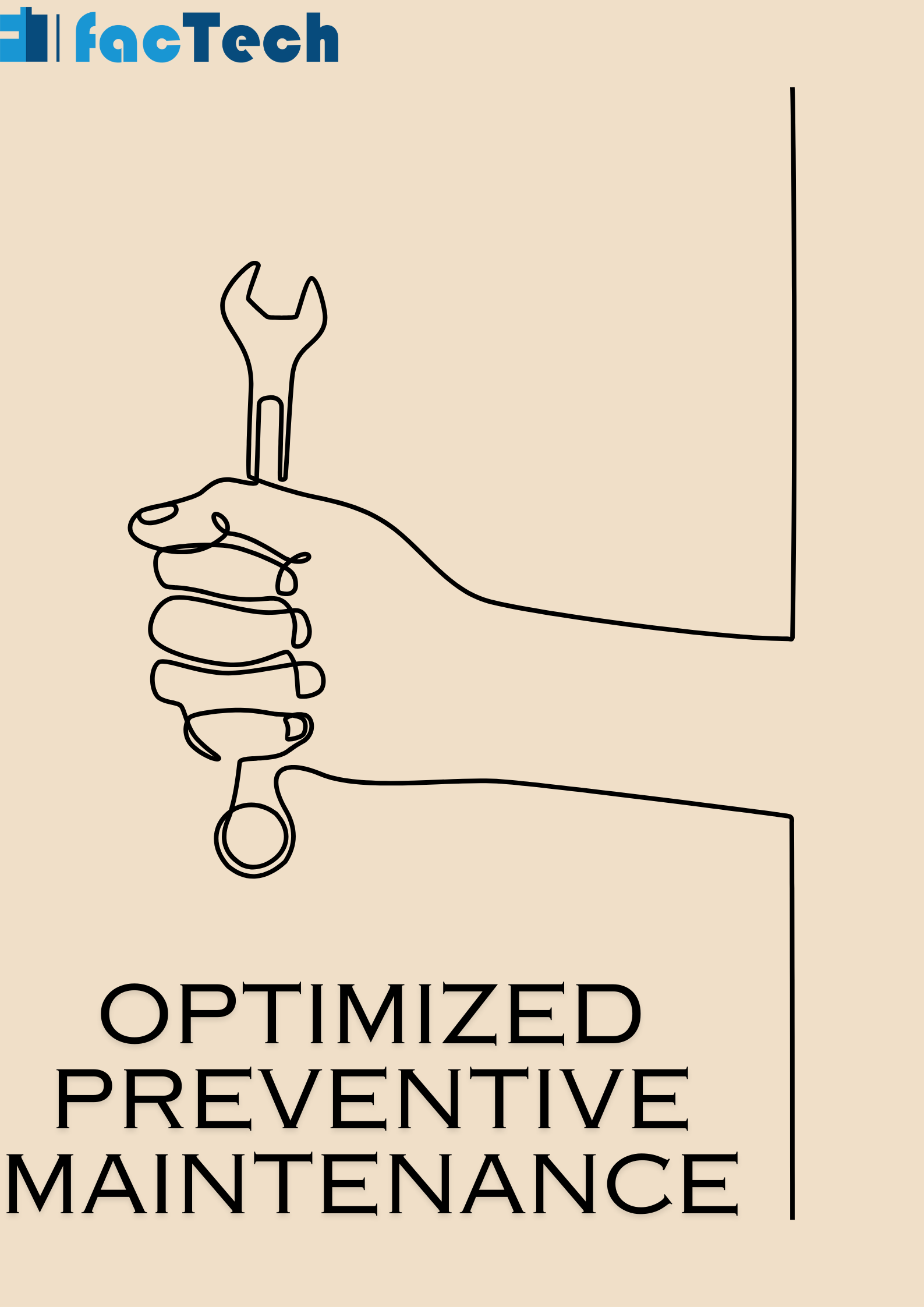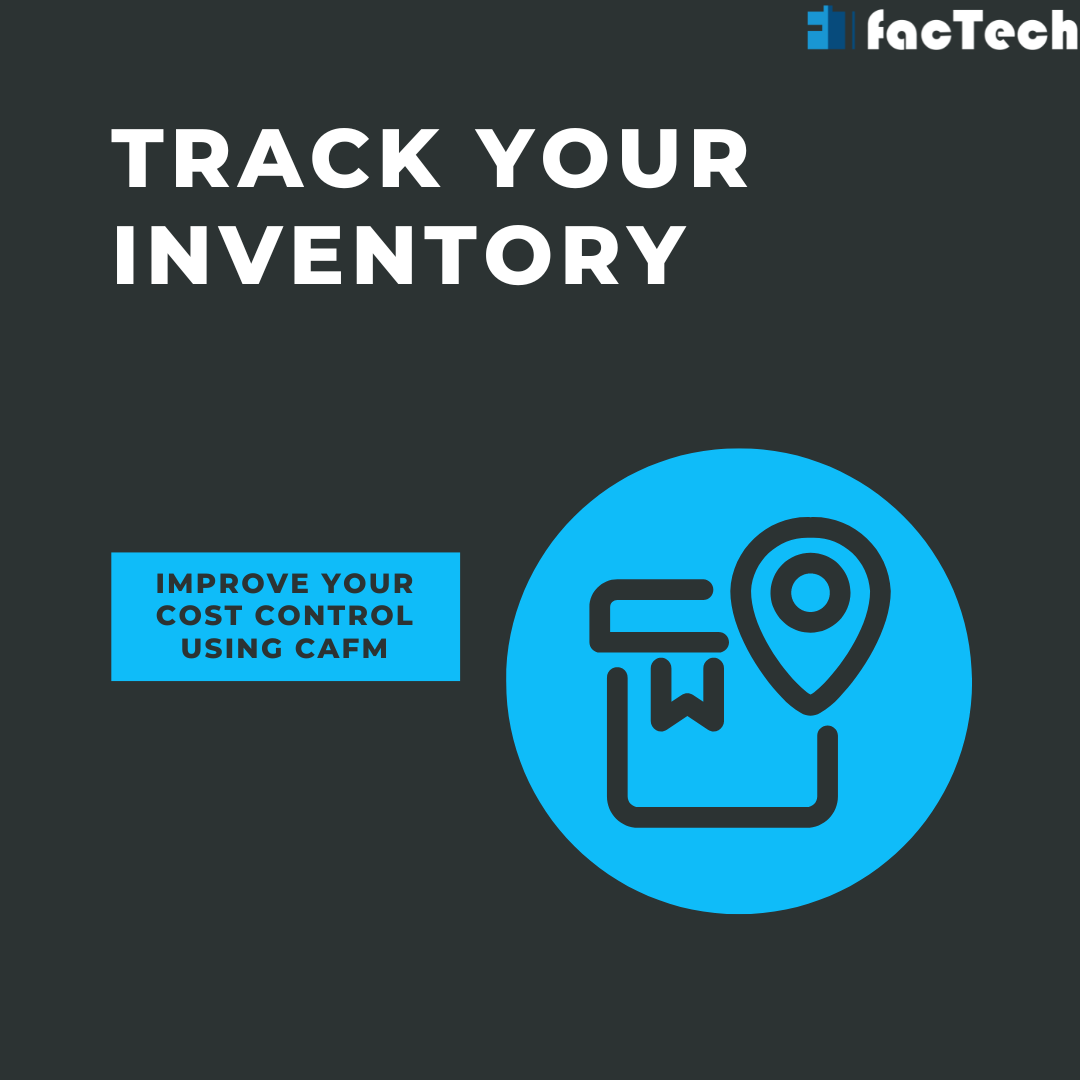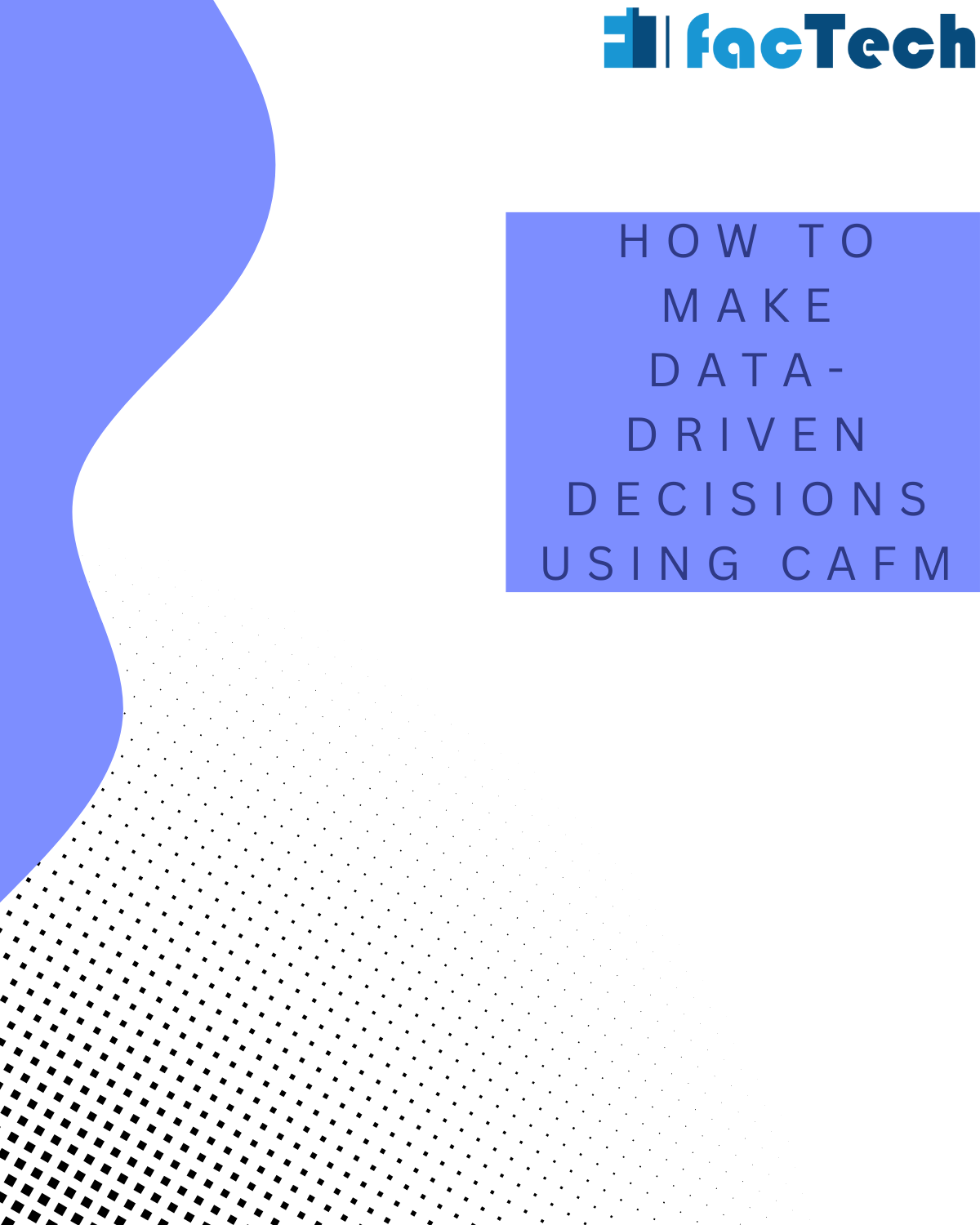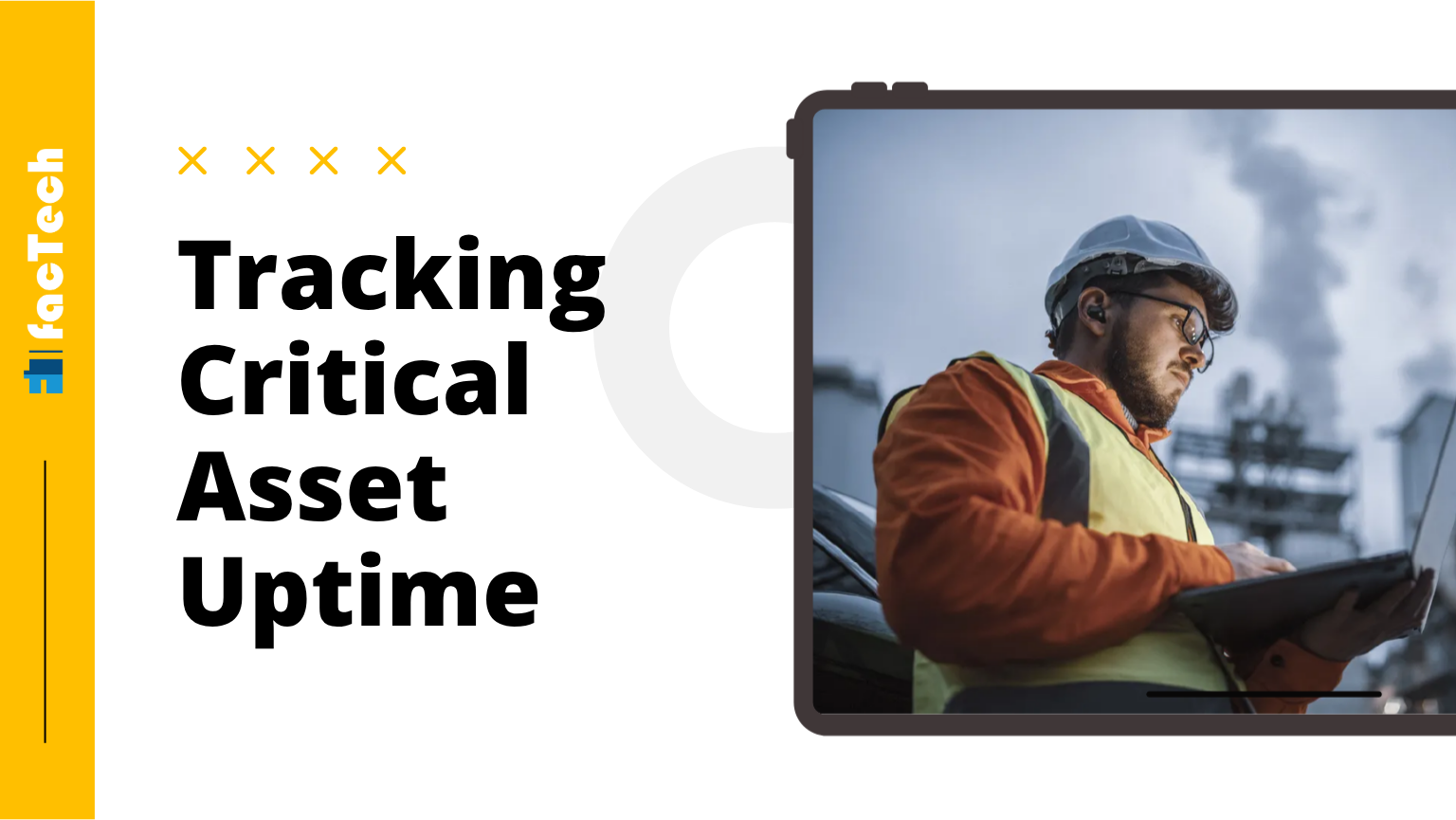5 Ways CAFM can save time and money for facility managers
5 Ways CAFM Can Save Time and Money for Facility Managers
In today’s fast-paced world, facility managers are under immense pressure to do more with less. They’re responsible for maintaining a safe, efficient, and cost-effective work environment, all while juggling a multitude of tasks and limited resources. This is where Computer-Aided Facilities Management (CAFM) software comes in as a game-changer.
CAFM is a powerful tool that goes beyond simply managing reactive maintenance. It offers a centralized platform for streamlining operations, optimizing resources, and ultimately saving both time and money for facility managers. Here are five key ways CAFM can achieve this:
1. Streamlined Work Order Management:

CAFM automates the entire work order process, from initial request to completion. This eliminates manual data entry, reduces errors, and improves communication between staff and contractors. Features like automated scheduling, priority setting, and mobile app access ensure that work gets done efficiently and on time.
Here are some key benefits of using CAFM for streamlined work order management:
Automated work order creation:
When a maintenance request is submitted, CAFM can automatically generate a work order with complete details, including location, equipment, priority level, and estimated completion time. This eliminates manual data entry and saves valuable time.
Improved communication and collaboration:

CAFM provides a central platform for all stakeholders involved in the work order process to communicate and collaborate. Technicians can access work order details, update progress reports, and receive updates in real-time. This transparency ensures everyone is on the same page and avoids delays.
Optimized resource allocation:
Based on technician skills, availability, and workload, CAFM can assign work orders to the most suitable personnel. This ensures tasks are completed quickly and efficiently, without overburdening any individual technician.
Preventive maintenance:
CAFM can track asset maintenance history and generate automated reminders for preventive maintenance tasks. This proactive approach helps prevent equipment failures and extends asset lifecycles, ultimately reducing downtime and costs.
Data-driven insights:
CAFM collects and analyzes data on work order completion times, resource utilization, and equipment performance. This data can be used to identify areas for improvement and optimize the entire work order management process.
Additional features of CAFM that can further streamline work order management:
Mobile app: Technicians can access and update work orders on their mobile devices, eliminating the need for paperwork and manual data entry.
Real-time tracking: Track the progress of work orders in real-time, ensuring transparency and accountability.
Reporting and analytics: Generate reports on key performance indicators (KPIs) to track progress and identify areas for improvement.
2. Optimized Preventive Maintenance:

CAFM helps manage preventive maintenance schedules for all your assets, from HVAC systems to furniture. By proactively scheduling maintenance, you can prevent costly breakdowns, extend equipment lifespan, and reduce downtime. The system can also track maintenance history, identify trends, and predict future needs, leading to more strategic maintenance planning.
Here are some key ways CAFM can help you achieve optimized preventive maintenance:
Automated Scheduling and Tracking:
Manual scheduling of PM tasks is time-consuming and error-prone. CAFM automates the process, creating and assigning work orders based on pre-defined schedules, asset history, and manufacturer recommendations. This ensures timely completion of tasks and eliminates missed maintenance.
Data-Driven Maintenance Decisions:
CAFM collects and analyzes historical data on asset performance, including maintenance history, sensor readings, and work order details. This data can be used to identify trends, predict potential failures, and adjust maintenance schedules accordingly. This data-driven approach helps you focus resources on critical assets and prioritize tasks based on actual needs, not guesswork.
Examples:
Optimizing cleaning schedules based on area-specific usage data.
Identifying opportunities for resource consolidation based on equipment utilization and space allocation.
Making data-driven decisions about capital expenditures for renovations or new equipment based on long-term needs and cost projections.
Improved Inventory Management:
CAFM tracks spare parts and inventory levels, ensuring you have the right parts on hand when needed. This eliminates downtime waiting for deliveries and reduces unnecessary inventory costs.
Mobile Accessibility:
Modern CAFM solutions offer mobile apps, allowing technicians to access work orders, asset information, and maintenance instructions in real-time. This improves field service efficiency and ensures tasks are completed accurately.
Enhanced Communication and Collaboration:
CAFM facilitates communication between maintenance teams, facility managers, and other stakeholders. Work order updates, performance reports, and other information are readily available, promoting transparency and collaboration.
The Benefits of Optimized PM with CAFM:
Reduced Downtime: By preventing equipment failures, optimized PM minimizes unplanned downtime, ensuring smooth operations and increased productivity.
Extended Asset Lifespan: Regular maintenance prevents wear and tear, extending the lifespan of your assets and reducing replacement costs.
Lower Maintenance Costs: Optimized PM helps you avoid costly reactive repairs and focus on preventive measures, leading to overall cost savings.
Improved Safety: Well-maintained equipment is less likely to malfunction, creating a safer work environment for employees and occupants.
Increased Sustainability: Optimized PM reduces resource consumption and waste generated by repairs and replacements, contributing to your sustainability goals.
3. Efficient Space Management:

In today’s dynamic business landscape, efficient space utilization is no longer a luxury, it’s a necessity. From optimizing office layouts to maximizing storage capacity, organizations are constantly seeking ways to squeeze more value out of their physical footprint. This is where Computer-Aided Facility Management (CAFM) software emerges as a game-changer, offering a powerful toolset for achieving efficient space management.
CAFM provides a digital floor plan of your facility, allowing you to visualize space usage, identify underutilized areas, and optimize space allocation. This can lead to significant cost savings by reducing wasted space and potentially eliminating the need for additional rent. Additionally, CAFM can facilitate space planning for reconfigurations or moves, minimizing disruption to employees and operations.
Tackling The Space Challenge:
Traditionally, space management relied on manual processes, spreadsheets, and gut feeling, leading to inefficiencies and inaccuracies. Underutilized spaces remained hidden, leading to wasted rent or missed revenue opportunities. Planning for relocations or expansions was cumbersome, often resulting in costly mistakes. CAFM bridges these gaps by providing a centralized platform for:
 Visualizing spaces: Floor plans, space utilization heatmaps, and 3D models offer clear insights into current space allocation and usage patterns.
Visualizing spaces: Floor plans, space utilization heatmaps, and 3D models offer clear insights into current space allocation and usage patterns.
Tracking assets: CAFM meticulously tracks furniture, equipment, and inventory, enabling better utilization and preventing unnecessary purchases.
Analyzing data: Historical usage data and real-time occupancy information empower data-driven decision-making on space optimization strategies.
Optimizing layouts: Simulation tools allow testing different layout configurations before implementation, minimizing disruption and maximizing space efficiency.
Streamlining processes: From space requests and move management to maintenance scheduling, CAFM automates workflows, saving time and resources.
4. Enhanced Inventory Control:

CAFM is a software platform designed to streamline various aspects of facility management, including asset management, maintenance, space planning, and, of course, inventory control. By centralizing data and automating processes, CAFM empowers facilities managers to gain complete visibility into their inventory, make informed decisions, and optimize stock levels.
CAFM tracks inventory levels for all your supplies, from cleaning products to spare parts. This allows you to minimize overstocking, prevent stockouts, and optimize purchasing decisions. Automated reordering based on pre-set thresholds ensures you always have what you need, when you need it.
Key benefits of using CAFM for enhanced inventory control:
Real-time inventory tracking:
CAFM allows you to track all inventory items, from spare parts and tools to furniture and equipment, in real-time. This eliminates the need for manual tracking and reduces the risk of errors and discrepancies.
Automated reordering:
Based on predefined minimum stock levels and historical usage data, CAFM can automatically generate purchase orders when inventory levels reach a critical point. This ensures you never run out of essential items, preventing downtime and disruptions.
Improved cost control:
By optimizing inventory levels and preventing stockouts, CAFM helps you avoid unnecessary spending on emergency purchases and overstocking. You can also track and analyze purchase history to identify cost-saving opportunities and negotiate better deals with suppliers.
Enhanced asset management:

CAFM integrates inventory management with asset management, providing a holistic view of your assets’ lifecycle. This allows you to schedule preventive maintenance based on usage data, extending asset lifespan and reducing maintenance costs.
Increased productivity:
Automating manual tasks like inventory tracking and reordering frees up valuable time for facilities managers to focus on strategic tasks and higher-level planning.
Data-driven decision making:
CAFM provides comprehensive reports and analytics on inventory usage, cost, and performance. This data empowers you to make informed decisions about purchasing, stocking, and allocation of resources.
Advanced features for further optimization:
Integration with IoT: Connecting sensors to your inventory items allows for real-time monitoring of their condition and location, enabling predictive maintenance and proactive inventory management.
Mobile accessibility: Accessing inventory data and managing tasks on the go through mobile apps improves efficiency and flexibility.
Barcode scanning: Streamline inventory check-in, check-out, and cycle counts using barcode scanners for faster and more accurate data capture.
Implementing CAFM for enhanced inventory control:
Identify your needs and goals: Clearly define your inventory management challenges and desired outcomes before choosing a CAFM solution.
Evaluate different CAFM options: Consider features, integrations, user interface, and budget when selecting a software that best suits your organization’s needs.
Seamless implementation: Ensure proper training and data migration to minimize disruption and user adoption challenges.
Continuous improvement: Regularly review and optimize your inventory management processes based on data insights and user feedback.
5. Improved Data-Driven Decision Making:

In today’s dynamic business landscape, data is king. This holds true for facility management as well, where informed decisions based on accurate information can significantly impact operational efficiency, cost savings, and overall tenant/employee satisfaction. This is where Computer-Aided Facility Management (CAFM) systems shine, enabling organizations to harness the power of data and make smarter choices.
CAFM collects and analyzes data on all aspects of your facility operations, including energy consumption, maintenance costs, and space utilization. This data provides valuable insights that can help you make informed decisions about resource allocation, budget planning, and sustainability initiatives.
Tackling The Traditional Dilemma:
Before CAFM, facility management relied heavily on manual processes and siloed data, leading to:
Inefficient data collection and analysis: Scattered information across spreadsheets and paper trails made it difficult to get a holistic view of facility operations.
Reactive maintenance: Equipment failures often went undetected until they caused disruptions, resulting in unplanned costs and downtime.
Subjective decision-making: Decisions were based on intuition and experience, lacking the objectivity and transparency that data-driven approaches offer.
CAFM to the Rescue:
CAFM systems act as central hubs for all facility data, including:
Asset information: Details of equipment, furniture, and other assets, including age, condition, maintenance history, and location.
Work order management: Tracking maintenance requests, scheduling technicians, and monitoring completion.
Space management: Optimizing space utilization, tracking leases, and managing occupancy.
Energy consumption: Monitoring energy usage and identifying areas for improvement.
Know more: Smart FM for Energy-Efficient Buildings
Cost management: Tracking expenses and forecasting budgets for various facility operations.
Benefits of Data-Driven Decision Making with CAFM:
By leveraging the rich data stored in CAFM systems, facility managers can:
Optimize maintenance schedules: Predictive maintenance based on sensor data and historical trends minimizes downtime and extends equipment lifespan.
Reduce operational costs: Identify and eliminate wasteful spending by analyzing resource allocation and energy consumption patterns.
Improve space utilization: Allocate space efficiently based on real-time occupancy data and optimize floor plans for better workflow.
Enhance occupant experience: Respond promptly to maintenance requests and ensure a comfortable and productive work environment.
 Make strategic investments: Identify trends and forecast future needs, informing informed decisions about facility upgrades or expansions.
Make strategic investments: Identify trends and forecast future needs, informing informed decisions about facility upgrades or expansions.
Beyond these five key benefits, CAFM also offers:
Enhanced compliance and regulatory adherence: CAFM helps track and manage compliance with regulations and safety standards, reducing risks and fines.
Increased transparency and accountability: The centralized data repository provides a clear picture of facility operations, improving transparency and accountability across the organization.
Conclusion
In conclusion, CAFM is not just a software solution; it’s a strategic investment that can significantly improve efficiency, reduce costs, and empower facility managers to make data-driven decisions. By leveraging the power of CAFM, facility managers can create a more sustainable, productive, and cost-effective work environment for everyone.








